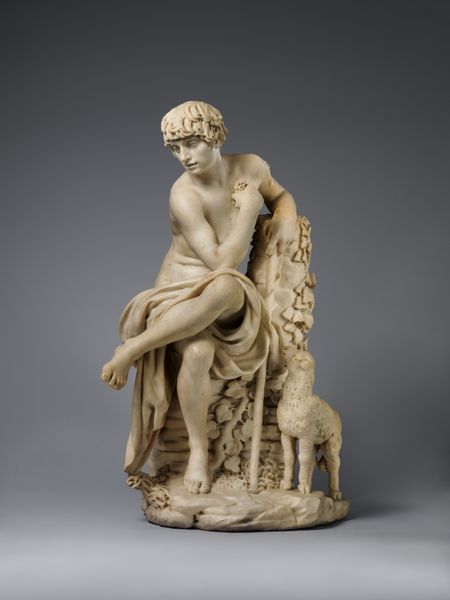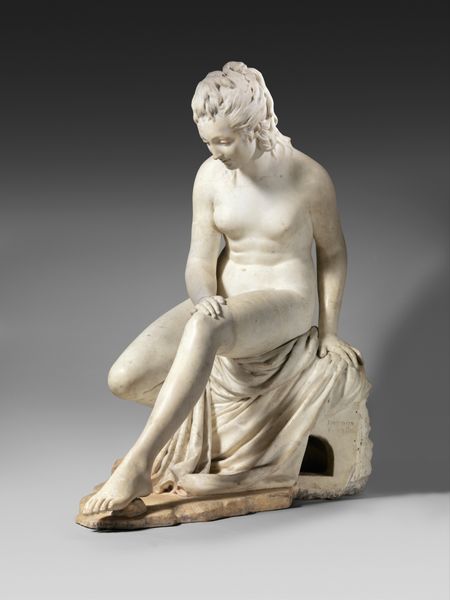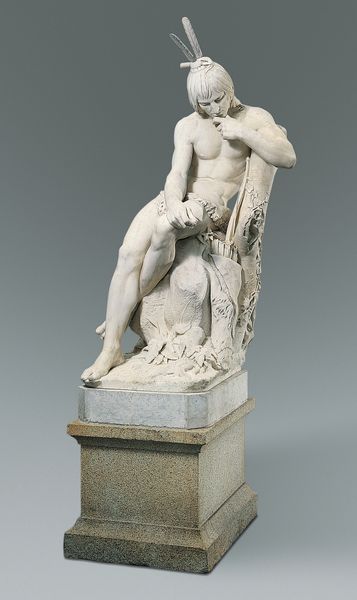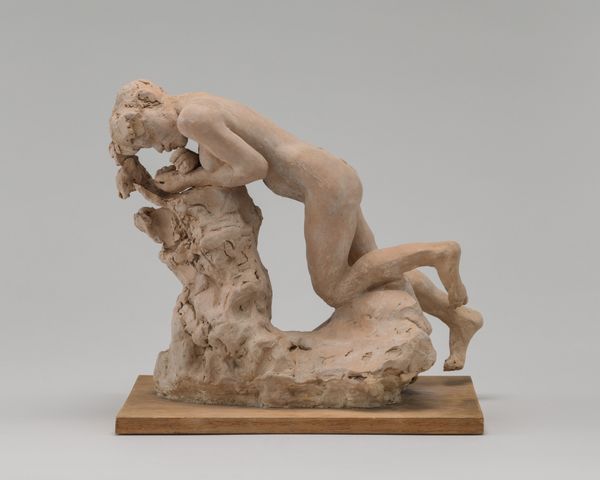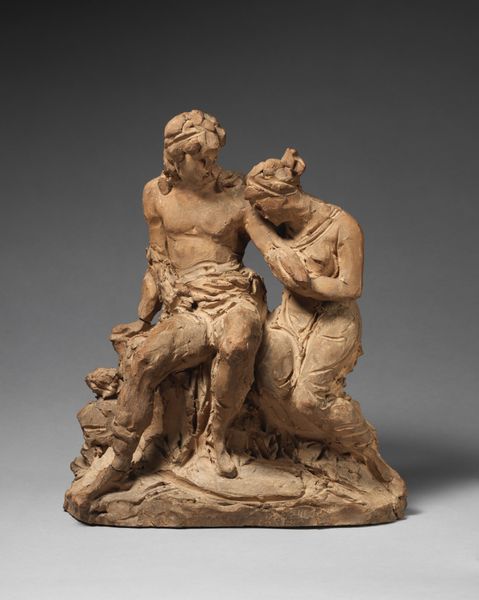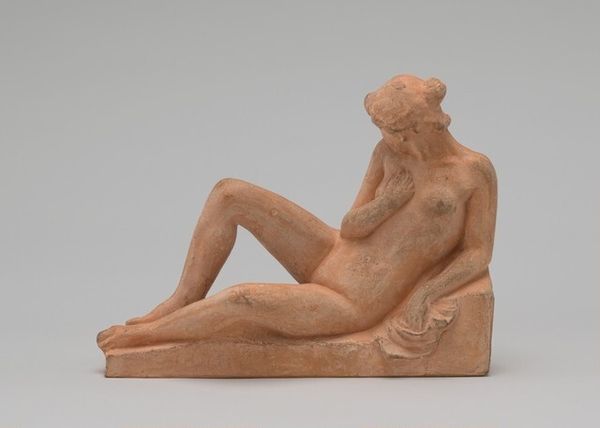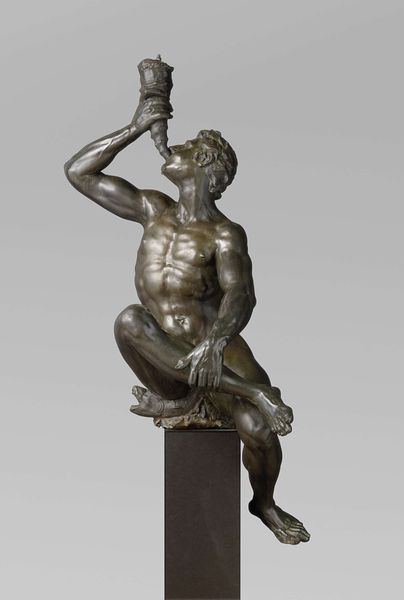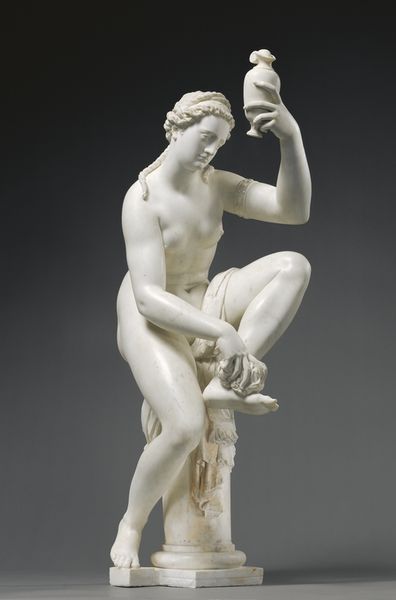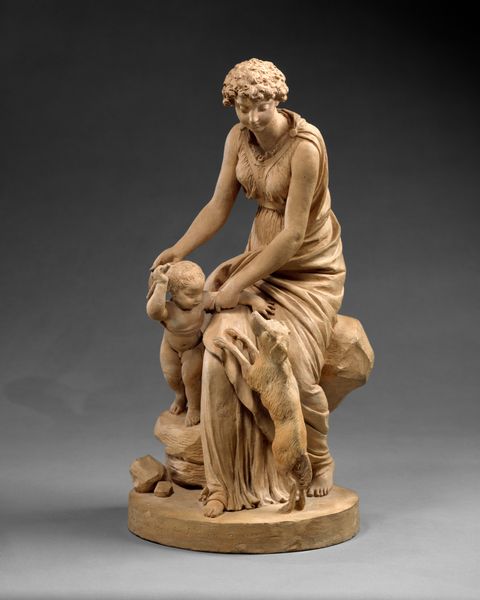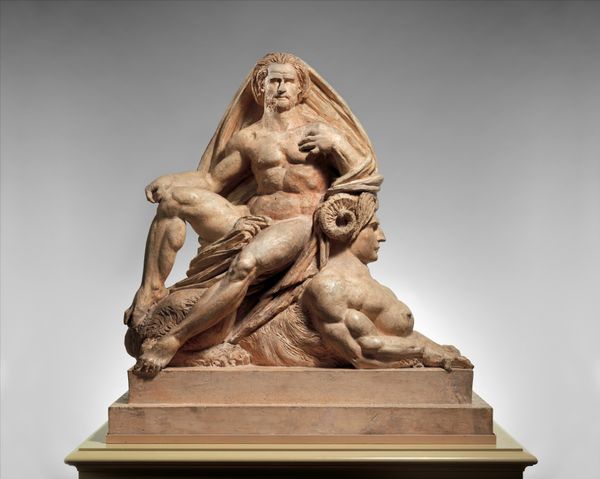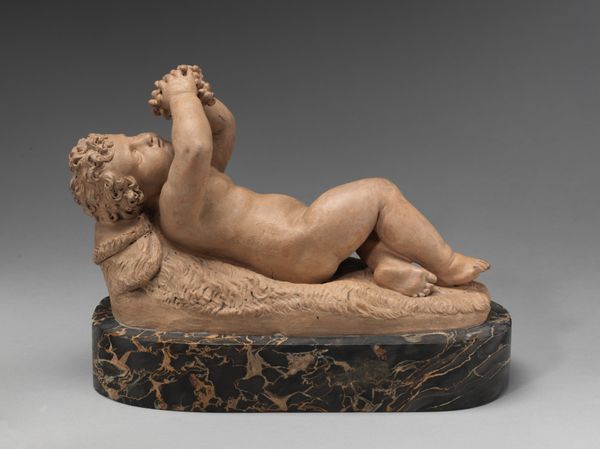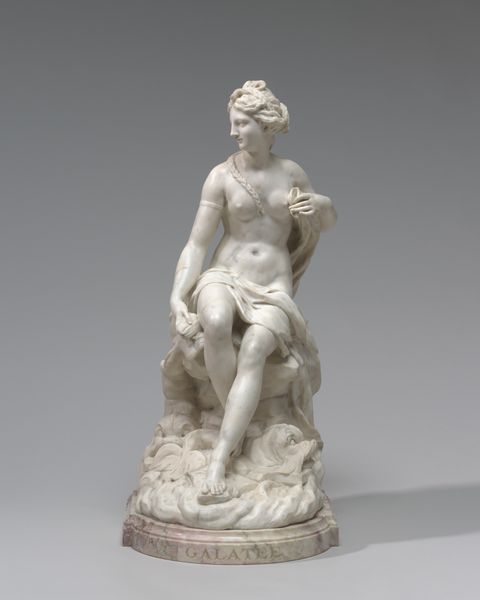
sculpture, wood
#
portrait
#
baroque
#
sculpture
#
figuration
#
sculpture
#
wood
#
nude
#
realism
Dimensions: height 43 cm, width 48.5 cm, depth 19.3 cm
Copyright: Rijks Museum: Open Domain
Artus Quellinus created this terracotta sculpture, entitled Day, in the 17th century. Quellinus, a Flemish sculptor, was deeply influenced by classical antiquity and the Italian Baroque. During the 17th century, the Dutch Golden Age flourished, marked by unprecedented economic prosperity, artistic innovation, and global trade. This sculpture is a depiction of masculine beauty which elevates and idealizes the male form, showcasing the era's fascination with anatomy and classical ideals. The relaxed, reclining posture of the figure suggests a moment of contemplation or repose, inviting viewers to consider the passage of time and the cyclical nature of existence. The sculpture reflects the complex interplay of power, gender, and representation that defined the Baroque era. "Day" embodies a sense of authority and self-possession, reflecting the societal norms and values of the time, yet it also hints at the transient nature of human existence. Quellinus’s work encourages us to reflect on the legacies of classical antiquity.
Comments
rijksmuseum about 2 years ago
⋮
Artus Quellinus was in Rome from 1635 to 1639. The impact of Italian art on his work is often evident. In Amsterdam, some twenty years later, he made this freehand copy of Michelangelo’s Day. He must have seen the original in Florence, either on his way to Rome, or returning.
Join the conversation
Join millions of artists and users on Artera today and experience the ultimate creative platform.

